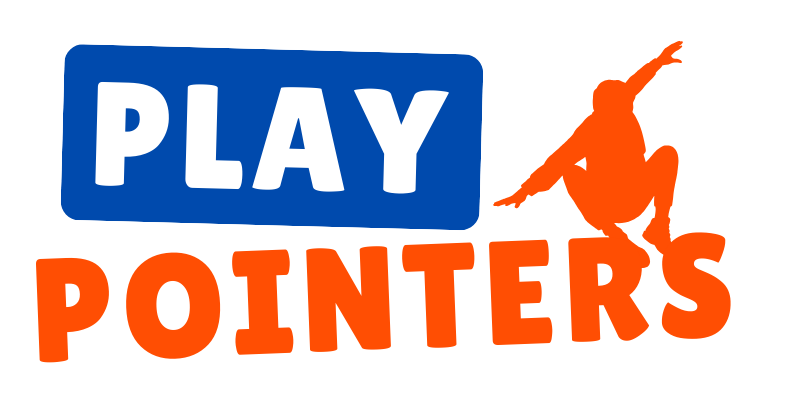How Do You Hit a Bullseye in Darts Everytime?

Key Takeaway:
- It’s impossible to hit a bullseye in a game of darts everytime, but with practice you can get more consistent
- Lighter grips give players more control over a dart and improves accuracy
- Tighter grips increase muscle tension, causing a player to pull darts
- Playing on a quality dartboard, with a thin spider, will make it easier to regularly hit the bullseye
- Choosing the right type of darts for your style of throw will help you get more accurate when throwing darts
Tips on How to Get a Bullseye in Darts?
No matter what anyone says, there is no way that anyone will show you how to hit a bull on every throw.
Not even the pros can achieve it every single time, however there are things that will make it easier to hit the bull by improving your accuracy and aim overall.
At the same time, improving your accuracy can then be transferred to any part on the board, giving you a better chance at any target you’re aiming for.
Practice
To consistently hit a bullseye in darts, training and repetition are essential.
The bullseye is a relatively big target on the board compared to trebles and doubles.
In this context it slightly easier to hit, however it is not as easy as the pros can sometimes make it look and a lot of players can struggle.
- The bull counts as a double, and you can finish on a bullseye in games of X01, it is worth the little extra effort.
- If you play lots of double in games, you will also need to be able to hit the center target.
So the first tip, and the most obvious, is to practice! Practice! Practice!
Using the Right Darts
If you are having trouble hitting the bullseye, you may be playing with the wrong type of darts.
Don’t get me wrong, it is not like pool where you have a separate breaking cue.
There are no bullseye darts, but most players have a type of dart that is easier for them to throw with.
Choosing the right darts will help you with scoring in the bull.
Five things to consider when choosing your ideal dart:
- Weight: The weight of the dart is crucial, and players must choose one that they can comfortably throw with the right amount of force. Heavier darts offer more stability, while lighter darts have better control.
- Flight: The darts’ flight impact the trajectory and stability of the darts in the air. They come in all different shapes and sizes. Longer flights are usually faster than smaller flights. Generally speaking, if you have a hard throw, you would normally use a longer flight.
- Barrel: The shape, texture, and design of the barrel does affect grip and accuracy. Some players like longer, thin barrels, while for others the short barrels feel more comfortable to throw with.
- Shaft: The shaft connects the barrel to the flight and serves as a bridge between both. The right shaft’s length and material can impact the stability, accuracy, and balance of the dart. Usually longer flights on a shorter barrel with short shafts for players with a powerful throw. Shorter flights on a longer barrel with longer shafts for more finesse.
- Price: The price of the dart must also be considered while choosing the right one. Some are highly priced due to additional features, such as better grip and design. However, beginners can start with reasonably priced darts and upgrade as they progress.
Playing on a Quality Dartboard
Believe it or not, your dartboard can be making it harder for you to consistently land the bull.
The quality of the board is important, especially when it comes to the type of spider (wired numbered ring) that is used.
A quality board, made of sisal fibers, tend to use thinner metal wires which does makes a big difference.
Cheaper boards, and ones of less quality, usually have thicker metal, which take up more room on the board, and increases the rate of bounce outs making it harder to hit the bullseye.
Things to consider when selecting a quality Dartboard:
- The best quality dartboards are bristle boards, made from sisal fibers
- A standard sized dartboard has a diameter of 18-inchs, with 20 number segments
- A quality dartboard is supposed to be 1.5 inches thick
- Quality boards have a thin wired number ring that helps t reduce bounce outs
Position Your Toe and Arm Correctly
How you position your body, can directly help with your aim and accuracy.
Correctly aligning both your toe and arm is something that you should be conscious of.
- Stand with your dominant leg forward and parallel to the oche. Your toes should point slightly towards the board, and ensure that your feet are shoulder-width apart.
- Hold the dart in your dominant hand with a relaxed grip. Position your elbow close to your side, and your forearm in a vertical line with your shoulder while your bicep is horizontal
- Keeping your focus on the target, bring your arm back, and release the dart with a gentle, but swift motion. Follow through by keeping your arm extended until the dart reaches the board.
Phil Taylor, the greatest to ever pick up a dart, who won 16 world championships, has always maintained that toe and arm positioning significantly impacts the accuracy of a dart.
Use a Lighter Grip on the Dart
Technically speaking, there is no right or wrong way to grip a dart.
If you are new to the sport, you should experiment with different ways to hold a dart, and find the one that feels most natural to you as you develop your throwing style.
Some things to consider when gripping a dart:
- Lighter grips, offer more control over the dart and helps with a more natural motion, which aids accuracy.
- Lighter grips also help with a smoother throw by keeping the wrist stable during a throw.
- Tight grips, increase muscle tension in your arm and hand. This can lead to less consistent throws, which can negatively impact your final score.
Focus on Your Follow-Through
To make it easier to hit the bullseye, you need to pay close attention to your follow through, which is basically the point at which you release the dart.
When you have released the dart, your hand should be in line with the center spot on the target, in this case the bull.
- When you are in position at the oche, you need to aim for the bullseye by casting a straight line from the dart to the bull
- If your arm moves in an arc, the dart is more likely to miss its target
- Focus on keeping a straight arm and releasing the dart once a third of the throw is completed
Maintaining a fluid and continuous motion through the throw of each dart is key to the follow-through.
FAQs about How Do You Hit A Bullseye In Darts Everytime?
How Do I Choose the Right Darts for Hitting the Bullseye?
To hit the bullseye consistently, you need a dart flight shape that provides maximum stability. The three best dart shapes for stability are the standard shape, the lantern shape, and the number 6 shape.
Both professionals and beginners love the number 6 because it gives the dart so much stability and lifts while it is flying toward the board.
What Kind of Dartboard Should I Use to Increase My Chances of Hitting the Bullseye?
You need to play darts on a quality dartboard that has very thin wires. Many of the cheaper dartboards will have very thick wires all throughout the surface, especially around the bullseye.
This will increase your bounce out rate and prevent you from hitting the bullseye when you want to. Therefore, try to find a nice bristle dartboard with thin wires. This will reduce your bounce out rate and increase your chances of successfully hitting the bullseye.
What Is the Correct Toe and Arm Position for Achieving Consistent Bullseye Shots in Darts?
When you step forward next to the throw line, your big toe needs to be facing the dartboard. This ensures the front of your body is aligned with the board.
Next, your throwing arm needs to be positioned appropriately. Your forearm must be perpendicular while your biceps remain horizontal. This position will give you the most control and stability over your dart as you throw it.
How Should I Adjust My Grip to Improve My Bullseye Aiming Technique?
A lot of newbies make the mistake of thinking that a tight grip will give them better control of their dart. The truth is that a lighter grip is better for maintaining control of a dart.
Your thumb and index finger should be gripping the back, and the middle finger should be resting on the point. Do not use more than three fingers to grip your dart.
What Is the Role of Follow-Through in Hitting the Bullseye, and How Can I Master It?
When you go to throw your dart, keep your arm as straight as possible and move your arm fast. However, pay attention to the point where you finally release the dart.
You will want to let go of the dart after 66% of the throw is completed. By the time the throw is completed, your hand should be aligned with the bullseye. This sounds easier than it is, so just keep refining your throws until you get it right.
What Are Some Practice Drills and Exercises I Can Use to Improve My Bullseye Accuracy in Darts?
Practice makes perfect. To hit the bullseye everytime, you need to practice your dart throws on a daily basis until hitting your target becomes second nature.
This could take you weeks, months, or even years to get this skill. It all matters how much time you spend practicing each day. Once you are finally able to hit the bullseye on demand, do not stop practicing. You need to keep up your skills to ensure you can always perform this well.
References
https://www.wikihow.com/Throw-Darts
https://www.mensjournal.com/adventure/how-to-hit-the-bullseye-in-darts-20140813






